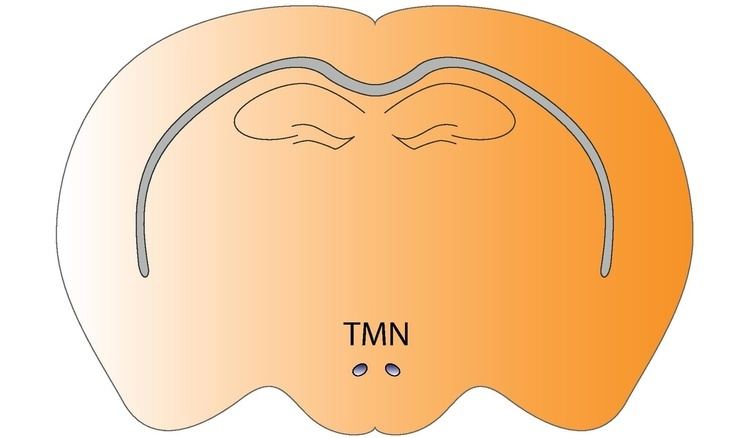Part of Hypothalamus NeuroNames ancil-427 | Acronym(s) TMN TA A14.1.08.932 | |
 | ||
Latin Nucleus tuberomamillaris NeuroLex ID Tuberomammillary nucleus | ||
The tuberomammillary nucleus is a histaminergic nucleus located within the posterior third of the hypothalamus. It consists of, largely, histaminergic neurons (i.e., histamine-releasing neurons) and is involved with the control of arousal, learning, memory, sleep and energy balance.
Histaminergic outputs
The tuberomammillary nucleus is the sole source of histamine pathways in the human brain. The densest axonal projections from the tuberomammillary nucleus are sent to the cerebral cortex, hippocampus, neostriatum, nucleus accumbens, amygdala, and other parts of the hypothalamus. The projections to the cerebral cortex directly increase cortical activation and arousal, and projections to acetylcholinergic neurons of the basal forebrain and dorsal pons do so indirectly, by increasing the release of acetylcholine in the cerebral cortex.
